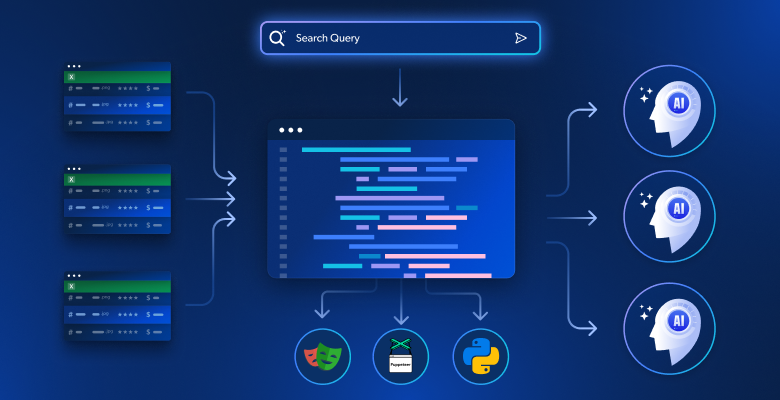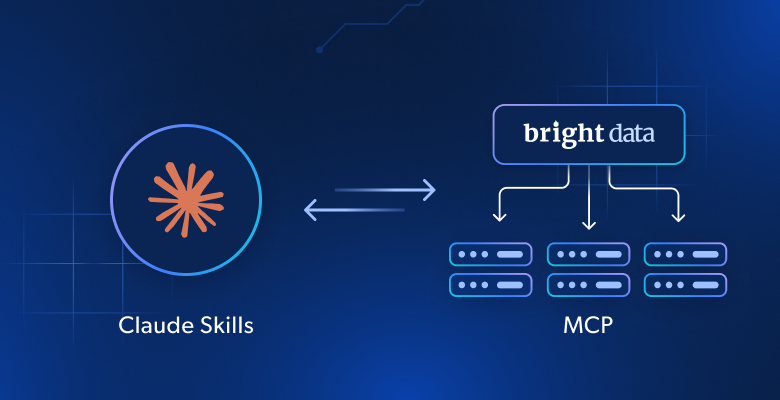Your IP address is like your virtual address, allowing websites and serves to know who you are when you connect to the internet, when in fact remaining anonymous is crucial to your business strategy.
The topics we will cover:
What is an IP address?
Your IP address is a set of numbers unique to the internet network you are using. While surfing the internet, there is essentially a dialogue created between ‘users’ and ‘servers’. When accessing a web browser, data is automatically requested which allows servers to provide users with adequate responses. Your IP address informs the servers of who is behind the requests.
In short, IP addresses allow clients to access servers and servers use these same IP addresses to send the data back to you and not another device by mistake. The communication between IP addresses and servers is part of the TCP/IP model, which determines how all devices on the internet interact with one another.
IP address can be classified using the following criteria :
IPv4 vs. IPv6 – IPv4 is a connectionless protocol that allows you to create a simple virtual communication layer over a variety of devices whereas IPv6 has hierarchical routing and addressing infrastructure as well as a stateful/stateless configuration.

Public vs. local – The major difference being scope i.e. public IP addresses are widely used in order to locate devices and systems whereas local IPs are typically used in private networks to find devices/computers that are connected.
Static vs. dynamic – Static IP addresses remain the same throughout their lifetime whereas the majority of devices utilize dynamic IP addresses assigned by their network when they originally connect and then ‘evolve’ and change over time.
5 best methods to hide your IP address
- Using a VPN Service
- Connecting to Tor Browser
- Leveraging Proxy Servers
- Taking advantage of Free/Public WiFi
- Getting a new IP from your ISP
VPN Service: This is the most tried and true method of hiding your IP address. Signing up for a VPN service allows you to borrow a new IP address that will be displayed each time you go online. The IP address is provided by the service and is different from your own.
The advantages of using a VPN service include the ability to choose the geographical location of your IP while maintaining a secure connection as well as high-speed bandwidth. However, there are a wide variety of VPN services and not all of them are of high quality. It is important to research the quality of service before signing up.
Tor Browser: The Tor Browser is a free program that can be downloaded and is used like other browsers, (think Chrome, Safari, and Firefox) except your IP address remains hidden when you go online. The Tor Browser software is heavily encrypted, providing extra layers of security that allows for increased anonymity. This method is often used in countries with restricted internet access – the upside is that it is free, the downside is that it may be slower than other methods. TOR also has a very limited number of low-quality IPs.
Proxy Server: Proxies can be used to re-route browsers around content filters or as a means of hiding your IP address. Proxy technology has come a long way since the ‘90s and early 2,000s, using sophisticated peer-to-peer networks to hide your identity and get you the information you need. While there are many free proxies available, they can be extremely risky to use. You need to be very vigilant in terms of the proxy service you chose as unethical proxy services can slow internet connection by utilizing your computer’s bandwidth to route traffic through your device without your consent (which can also cause severe data security breaches). It is for this reason that it is important to choose a reputable company-managed proxy that may not be free but will provide a safer alternative, acting both within the guidelines of legality and industry ethical standards.
Free/Public WiFi: When using public WiFi, your IP address will temporarily be changed based on the network you are using. However, when using public WiFi there is always a higher risk of your connection being intercepted or hacked by a malicious third-party making this a suboptimal choice.
Get a new IP from your ISP: ISP or Internet Service Providers are responsible for assigning residential IP addresses to users like you and me. ISPs usually assign one IP address per household but it is possible to request an additional IP address from another location. But this is probably the least recommended option as the cons greatly outweigh the pros. All-in-all, this is a more expensive and less effective endeavor than the other options above. This option could result in many issues and headaches including:
- Assigning new addresses to old services
- Changing DNS servers so that they now point to your new IP addresses
- You would need to ensure that the access rules work properly (i.e. a lot of firewall work)
- Considering the quantity of changes that need to be made and addressed, one could easily make a mistake like skipping an entry and then the whole network you have built topples like a row of dominos
Main reasons to hide IP Address:
#1: Anonymity – If one wishes to find out your personal details on the internet, they can use your IP address to trace information such as your full name, the business you are working for, and in some extreme cases take retaliatory measures. This risk increases the more frequently you go online and search for industry data or specific competitor information. Keeping a low profile when doing market research, for instance, is crucial.
#2: Geolocation – While your IP address may not reveal your exact physical address or location, a server may still be able to determine certain details about your location based on your IP. Hiding or changing your location allows you to avoid this. In many instances, people will prefer to use localized IPs to the country in which their data targets are located or using IPs in geolocations where their target audience is most active.
#3:Detour network restrictions – Depending on the network you are connected to, there may be access restrictions. Changing your IP address is usually the easiest way to circumvent these blockades. Network restrictions may result due to a variety of reasons including being located in a country with strict politically motivated web traffic restrictions to utilizing a company or institutions networks with certain self-imposed restrictions.
#4: Bypass IP bans – If you are planning on accessing the web to perform certain things like web crawling, you should be aware that certain servers detect this as suspicious activity and will block your IP. In order to avoid IP bans you can change or hide your IP address or even use a rotating IP solution which essentially allows you to oscillate between different IPs in different numerical ranges so that ping and or API per second limitations are completely avoided.
#5: Block malicious hacks and attacks – By changing your IP address, hackers will not be able to trace your activity, servers, source code and/or software, making it more difficult for them to launch an attack. Using different IPs is also crucial in terms of performing security testing and scanning which may include:
- Denial of service attacks
- Identity vulnerability testing
- System penetration testing
- Malicious code injection attempts
Summing up
Hiding your IP address is crucial to many businesses who wish to maintain a competitive edge and/or keep their hand on the industry pulse. It is extremely important to be able to collect data under the radar, gathering the data sets you need completely undetected. There are a variety of ways in which this can be accomplished, though using a proxy server is by far the most efficient option for companies looking to data collection at scale. Carefully research each of the above solutions and see which offers you a toolset most suited to your data collection needs.
Your Code Here...






